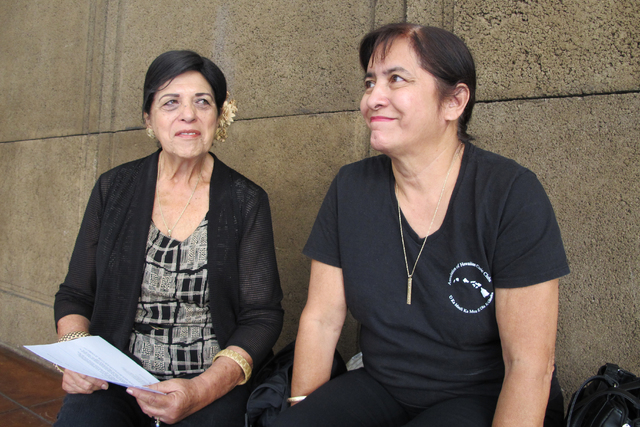HONOLULU — A group of Native Hawaiians wants to bring back a centuries-old island burial practice it says is more environmentally friendly than some modern interment methods.
Traditional “clean burials” involve cleansing the deceased by fire in a pit and then compressing the skeletal remains, wrapping them in a cloth woven from trees, and burying them in a basket.
Supporters note such burials use fewer chemicals and take up less space in cemeteries at a time when an aging population faces a limited amount of land.
“We have a lot of elders who are concerned about having enough capacity to bury their families when it’s time to go,” said Mahealani Cypher, who represents the Koolau Foundation, which is pushing the state to update its burial laws.
Several bills in the Legislature seek to change state law to encourage traditional Hawaiian burials.
Native Hawaiians practiced a variety of burial traditions before Western contact, but scholars say the common thread among them was a reverence for bones.
“Across all these practices, the bones — the iwi — are seen as the last repository of that person’s mana (spirit),” said Ty Tengan, chairman of the Department of Ethnic Studies at the University of Hawaii. “The mana needs to go back to the aina — the land — but it’s also meant to be protected and kept safe, because it was also the mana of the family.”
The remains of high-ranking chiefs often were hidden from public view in mountainsides or caves to discourage theft of the bones. Many chiefs believed stealing a rival’s bones allowed them to take away their spirit or desecrate the spirit of the rival’s clan, Tengan said.
Few practice traditional Hawaiian burials today, archaeologist Sara Collins said.
One bill seeks to change state law to ensure such practices are not considered abuse of a corpse, which is a misdemeanor.
Another measure, HCR 149, asks the Department of Health to change its burial rules to encourage the practice. A Senate committee approved that resolution Friday, and asked Hawaiian civic groups to provide a definition of traditional Hawaiian burials to the state.
“Part of our goal is to get people thinking Hawaiian,” Cypher said. Traditional Hawaiian burials used an imu, or underground oven, but modern burials could use a crematory facility, which is quicker and cleaner, she said. “I don’t see why Hawaiians wouldn’t take advantage of modern conveniences.”
Cypher envisions a law that would restrict cremation by imu to areas zoned for specific purposes such as agriculture.
“If you’re right next door to a subdivision or a condo, everybody’s going to be affected by the fumes,” Cypher said.
Across the U.S., a small but growing number of people are choosing various types of environmentally friendly burials. These so-called green burials typically avoid using concrete vaults, metal coffins and chemicals.
The Green Burial Council, an industry group that sets standards, aims to make green burials the new norm. Its website says its intention is to further “legitimate environmental and societal aims such as protecting worker health, reducing carbon emissions, conserving natural resources and preserving habitat.”
A March 2010 survey commissioned by the International Cemetery, Cremation and Funeral Association found a quarter of those polled liked the concept of environmentally friendly burials.



